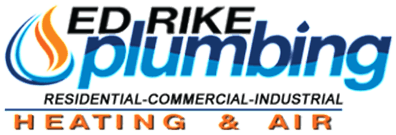
An Inside Look at Indoor Air Quality
How clean do most homeowners think the air is around their home? Chances are it’s more polluted than they think. Numerous studies have shown that indoor air is worse for health than outdoor air. As air circulates around the home, it can accumulate a staggering number of pathogens, mold, dust, pollen, and volatile chemicals. All of these can have negative health implications if breathed continuously. Luckily, some steps can be taken to keep the air inside of the home healthy.
What Is Indoor Air Quality?

So what exactly is indoor air quality? Made simple, it’s the quality of air inside of every building. Because society tends to keep windows and doors closed, there is a lack of fresh air entering the occupied space. The lack of fresh air can lead to toxins and mold growing inside.
Poor air quality has been linked to serious health risks and even less quality sleep.
The main and most common risk is known as (SBS) “sick building syndrome.” This sickness has caused long term health risks and can potentially lead to death. Because of this and other health risks, it’s extremely important to maintain healthy air quality.
How To Improve Indoor Air Quality

Luckily, there are ways homeowners can improve the quality of their air and avoid poor health. This does require some work, so they’ll have to be willing to make some effort. Although it is unlikely that they will eliminate all toxins, homeowners can still see significant improvement.
Some of the steps to take include:
- Vacuum At Least Once A Day – Vacuuming regularly can cut down on dust particles in the air. When those get cut down, there’s a greater chance of not having any mold inside. Homeowners should also have a vacuum cleaner with a certified (HEPA) filter.
- Get Fresh Air Inside – Although they may not always be able to, it’s good to have a window or door open sometimes. Fresh air can come inside the house and help remove any toxic allergens. Plus, the fresh air is healthier overall.
- Using Air Purifiers And UV Sanitizers- Purifiers and sanitizers can be small units that clean air in individual rooms or systems installed inside the home’s central air conditioning system. Both types of systems work to reduce indoor pollution and keep the air clean.
Choosing Air Purifiers and UV Air Sanitizers

So, what are air purifiers and UV air sanitizers?
- Air Purifier – A device that helps remove any toxins and contaminants in the air. People who have allergy problems tend to buy these, as it helps with breathing.
- UV Air Sanitizer – This device uses ultraviolet light to kill mold, bacteria, and viruses. UV light can also help neutralize odors and chemical contaminants.
They are both effective at removing toxins in the home, even if they have major differences. People tend to use the air purifier more because it can help with breathing, whereas people who hate germs tend to use the UV air sanitizer. As both of these devices have shown to be successful in improving air quality, it ultimately comes down to preference.
About Ed Rike Plumbing, Heating & Air
Ed Rike Plumbing, Heating, & Air has been a veteran-owned and operated plumbing and HVAC service company in Dayton, OH for 30 years. Specializing in HVAC and plumbing, their goal is to provide customers with a hassle-free and professional experience.




